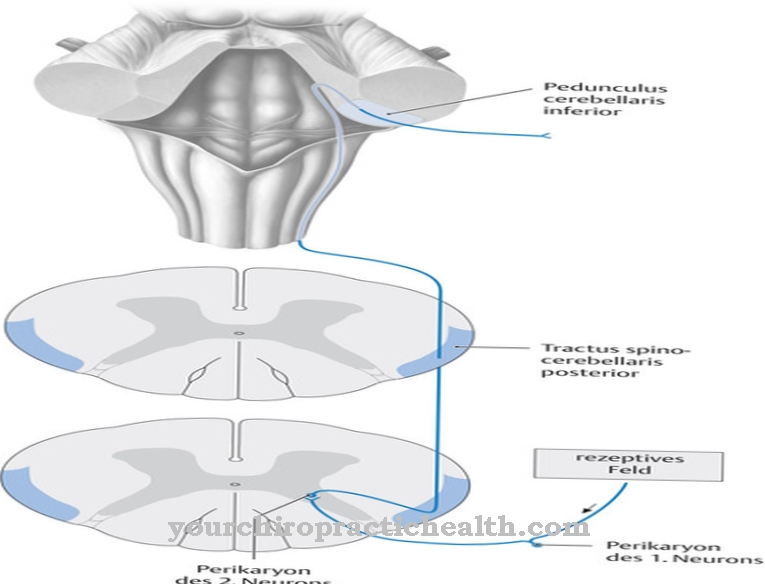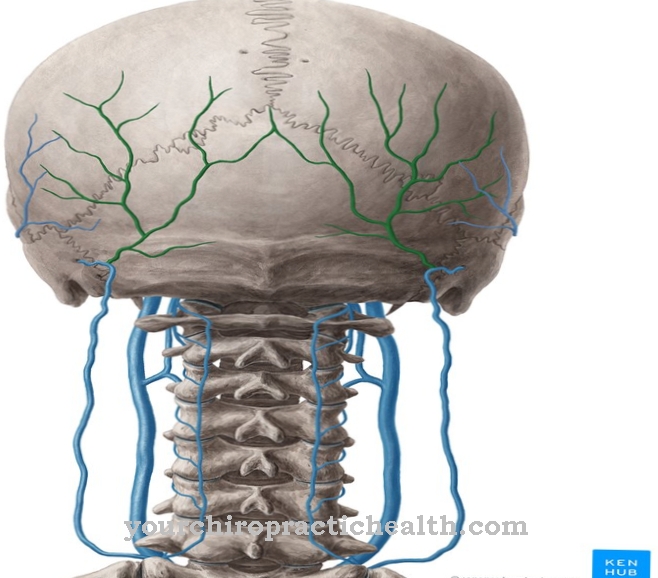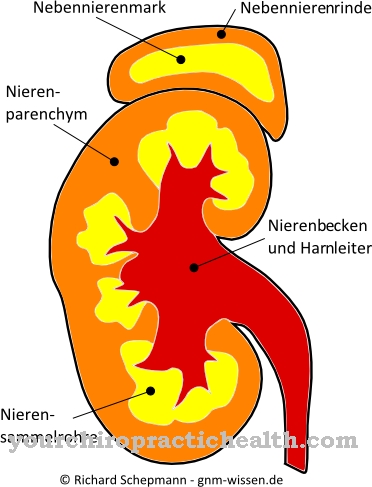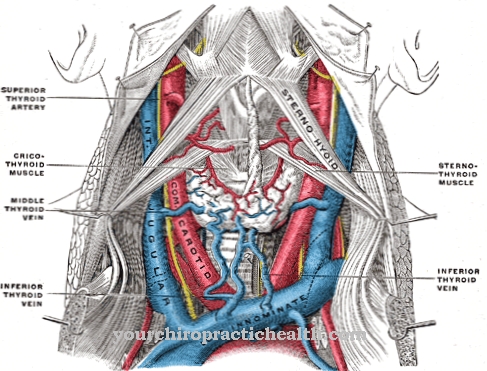The excitation of the sinus muscle in the heart is transmitted to the working muscles of the atria, which are electrically isolated from the ventricles, so that the excitation transmission at this point can only take place via the excitation line of the atrioventricular node. The transmission through the muscle cell containing Atrioventricular node is delayed and thus enables the coordinated rhythmic contraction of the atrial and ventricular muscles.
If the excitation transmission via the atrioventricular node no longer takes place quickly enough or fails, the doctor speaks of an AV block, whereas accelerated excitation transmission usually results in a palpitations and increased pulse in the context of Wolff-Parkinson-White syndrome.
What is the atrioventricular node?
The atrioventricular node is also Atrial ventricular node or Aschoff-Tawara knot called. The connection was first described by Ludwig Aschoff and his student Sunao Tawara in 1906 and is part of the conduction of arousal in the heart.
The excitation of the sinus node is delayed by the atrioventricular node transmitted to the ventricles. The delay in the transmission of excitation is shown in the ECG as PQ time and only enables the coordination of contractions of the atrial and ventricular muscles.
The atrioventricular node is the only electrical connection between the atria and the ventricles. At a power speed of 0.04 to 0.1 m / s, this part of the heart has the lowest conduction speed. If the sinus node fails, the atrioventricular node may also take over its function.
Anatomy & structure
The atrioventricular node lies on the wall between the right and left atria of the heart. The excitation line is thus located close to the border between the atria and the ventricle. The area of the right atrium and thus the condition of the atrioventricular node is also called Koch's triangle and continues into the conduction of the bundle of His.
This bundle of His can be divided into two legs, which, like the atrioventricular node, go back to the research of Sunao Tawara. The legs of the bundle of His are therefore also known as the tawara legs. Like all other excitation lines in the heart, the atrioventricular node also consists of individual heart muscle cells that make its transmission function possible.
Function & tasks
The sinus node takes on the role of the clock in the heart function. This part of the heart makes the heart beat in a certain rhythm, which is also known as the sinus beat. The sinus node thus emits excitation that reaches the working muscles of the heart in the atria.
The working muscles of the auricles ultimately pass the received excitation of the sinus node on. However, the working muscles of the atria are electrically isolated from the chambers by connective tissue. So the excitation of the sinus node cannot reach the muscles of the heart chambers in this way. The atrioventricular node is therefore necessary for the transfer of excitation to the ventricular muscles.
The transmission through the node takes place with a significant delay. In order for the ventricles to fill as well as possible, the atria first contract. Due to the delayed transmission of excitation from the atrioventricular node, the chambers only contract after a certain time and thus ensure that the chambers are filled.
Diseases
AV block is one of the most common complaints associated with the atrioventricular node. This is a common cardiac arrhythmia caused by a delayed or interrupted atrioventricular node. AV block often goes unnoticed. Unnoticed blocks mostly correspond to a first-degree block.
However, severe AV block makes the heart beat slower. The phenomenon thus triggers what is known as bradycardia, which in the worst case scenario causes the chambers to stop temporarily. Severe AV blocks therefore usually require a pacemaker to level the disturbed transmission back to normal. Such a severe disorder of the nodule is also referred to as a third-degree AV block.
Every AV block can be diagnosed by means of an ECG, where it can be noticeable as a prolonged PQ time depending on the severity. Congenital AV blocks are extremely rare, but may occur in the context of a congenital heart defect. Usually, however, AV blocks are acquired. They are usually caused by degenerative changes in the heart. Heart muscle inflammation or infections can pave the way for an AV block, for example. Usually, a patient with this clinical picture is treated with medication to bridge the gap.
After a certain amount of time, however, patients with severity two and three atrioventricular block are usually given a pacemaker, as drug therapy is considered unreliable for these symptoms. The opposite of an AV block is an accelerated conduction of excitation between the ventricles and the atrium. This phenomenon can occur, for example, in the context of Wolff-Parkinson-White syndrome. This is also a cardiac arrhythmia, which is usually triggered by an additional conduction path between the chambers and atria.
The accelerated transmission usually manifests itself in a greatly increased pulse and usually causes palpitations, i.e. tachycardia, to occur. In most cases, tachycardias can be regulated by the patient himself. For example, the pulse and heart rhythm level off again by pressing hard or holding your breath. In addition, the doctor usually supplies tachycardia patients with drugs such as ajmaline. In contrast to a slowed transmission of the sinus node excitation, surgical intervention is in most cases not indicated in the case of an accelerated conduction of excitation in the form of tachycardia.
Typical & common heart diseases
- Heart attack
- Pericarditis
- Heart failure
- Atrial fibrillation
- Myocarditis

























.jpg)

.jpg)
